Are you wondering what a water heater expansion tank does?
Curious whether you can install one yourself?
Either way, you’re in the right place. Read on to learn all you need to know.
We partnered with Networx to help you find local plumbers in your area. Click to below to get a FREE quote.
What Is a Water Heater Expansion Tank?
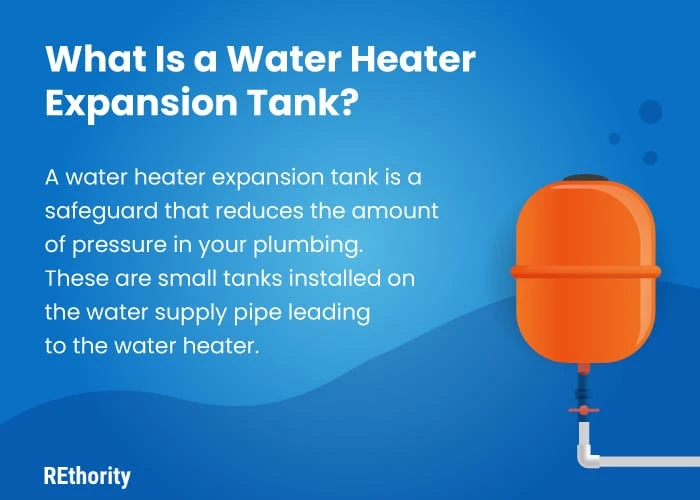
Water heater expansion tank is a safeguard system that reduces the amount of pressure in your plumbing. These tanks are small tanks that are installed on the water supply pipe leading to your water heater.
Water heater expansion tanks prevent excess pressure from damaging or overworking your plumbing and plumbing fixtures. They do this by accepting any excess water from a water heater and compressing air inside the tank.
It’s easier to understand how a water heater expansion tank works if you know the basics of how a water heater works.
In this guide, we’ll talk about this, how a water heater expansion tank works, how to determine if you need one, average costs, and installation.
How a Water Heater Expansion Tank Works
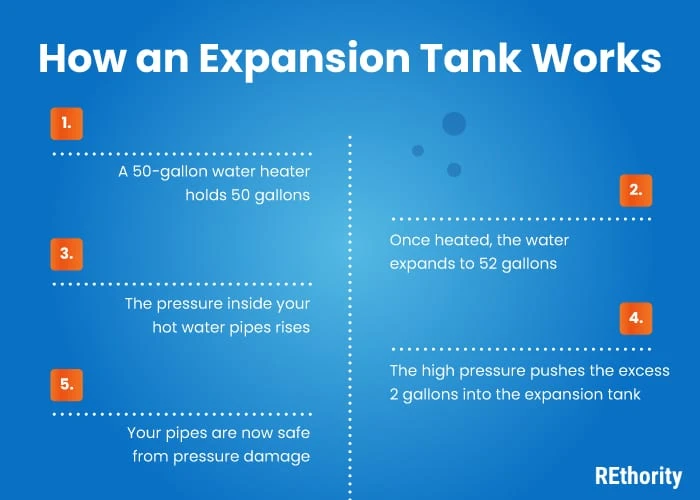
A water heater expansion tank is a simple but effective backup system that protects the plumbing in a home from excess pressure.
Where would excess pressure come from?
It all starts with the water heater, which has the simple job of heating water for use in your home. As the water in your water heater gets hotter, it naturally expands.
Thermal Expansion
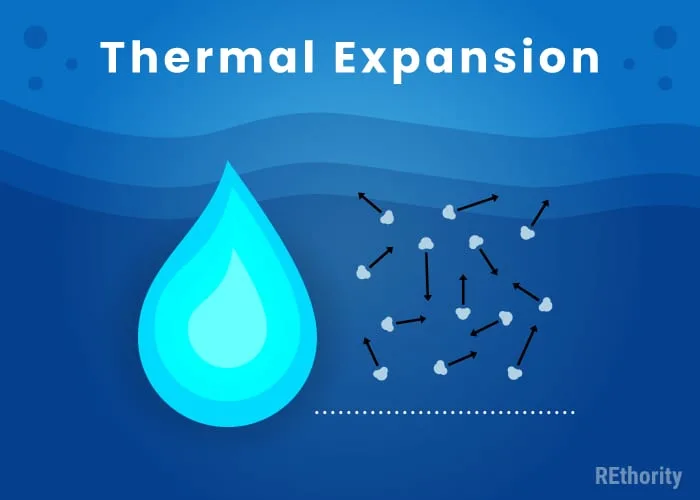
This process is called thermal expansion. A 50-gallon water heater is built to hold 50 gallons of cold water, but once that water heats up, the water volume expands to 52 gallons.
With two additional gallons of water volume that the water heater can’t handle, the excess water has nowhere else to go but your plumbing. It pushes against the walls of pipes, joints, and fixtures, weakening them over time.
Pressure Rises
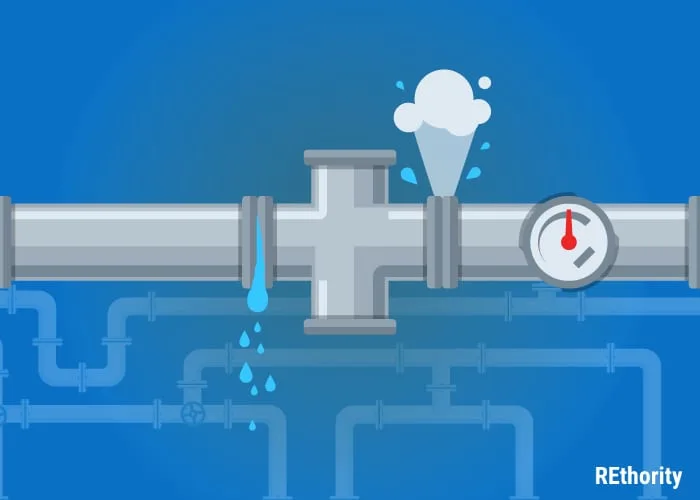
Because the water heater is now dealing with more water volume than it started with, the pressure inside your plumbing rises.
That pressure can damage your plumbing and plumbing fixtures over time, just like high blood pressure strains your body. It can even rise high enough to cause a water heater to burst.
Pressure Released Into Tank
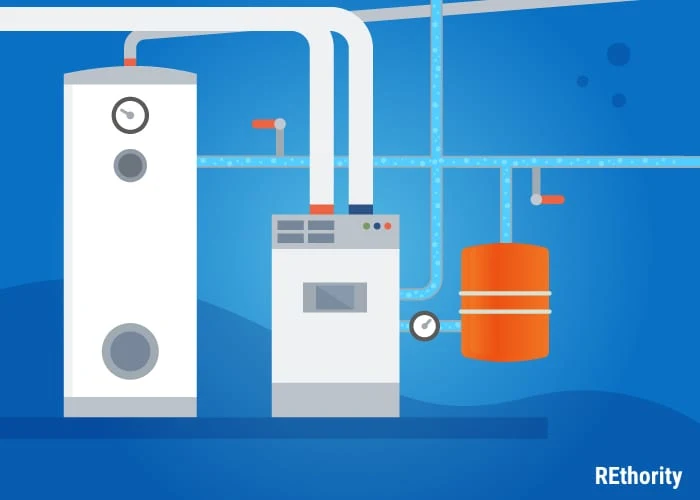
Here’s how the water heater expansion tank works to prevent that kind of damage: Half of the tank is filled with water from your home’s water system.
The other half is filled with compressed air. In the middle is a butyl rubber bladder that allows the water in the tank to expand when it gets hot.
This excess, expanded water from the water heater flows into the expansion tank and pushes the rubber bladder into the compressed air on the other side of the tank, further compressing the air inside the tank.
Do You Need a Water Heater Expansion Tank?
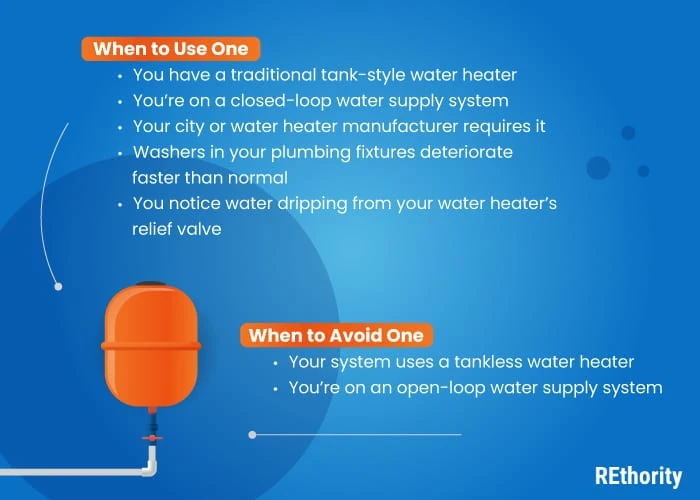
Not every home needs a water heater expansion tank.
How do you know if you need one?
You need a water heater expansion tank if
- You have a traditional tank-style water heater
- You’re on a closed-loop water supply system
- Your city or water heater manufacturer requires it
- Washers in your plumbing fixtures deteriorate faster than normal
- You notice water dripping from your water heater’s relief valve
You don’t need a water heater expansion tank if
- Your system uses a tankless water heater
- You’re on an open-loop water supply system
Without a water heater expansion tank to backup your water heater and handle the excess water and pressure from expansion, the water will either flow back into the municipal water supply or make its way into your plumbing.
This is determined by whether you have an open-loop or closed-loop water supply system.
Open-Loop Water Supply Systems
If your home is on an open-loop water supply system, the excess water (due to expansion from heat) has somewhere else to go – it simply drains back into the municipal water supply.
This does not cause any additional pressure or strain on the plumbing in the home, meaning you would not need a water heater expansion tank.
Closed-Loop Water Supply Systems
In a closed-loop water supply system, the water supply has a one-way valve (a backflow, check , or pressure-reducing valve) that prevents water from flowing back into the municipal supply.
In closed-loop water supply systems, the excess water has nowhere else to go, so it goes into the plumbing and increases the pressure.
Telling the Difference Between the Two
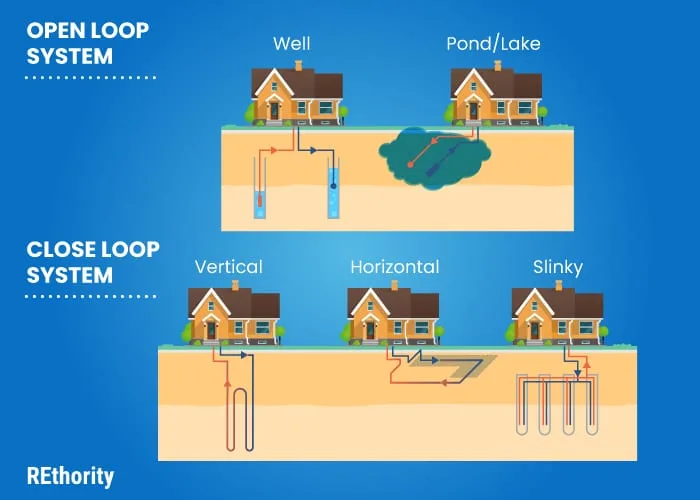
The best way to know for sure is to call a plumber. They’ll look at your plumbing and check for special backflow prevention valves to indicate a closed-loop system.
From there, they will be able to recommend the proper size of water heater expansion tank for your water heater and install it for you.
If you’re on a closed-loop water supply system, your city may require an expansion tank because of the increased risk of excess pressure in your plumbing.
You should check with your municipality to find out if a water heater expansion tank is required. After all, it can lead to a costly mistake if something goes wrong with your water heater.
Some manufacturers will not honor a warranty if a water heater expansion tank is not installed on a closed-loop water supply system. So you’d need to have one installed to prevent your warranty from being voided.
Water Heater Expansion Tank Costs
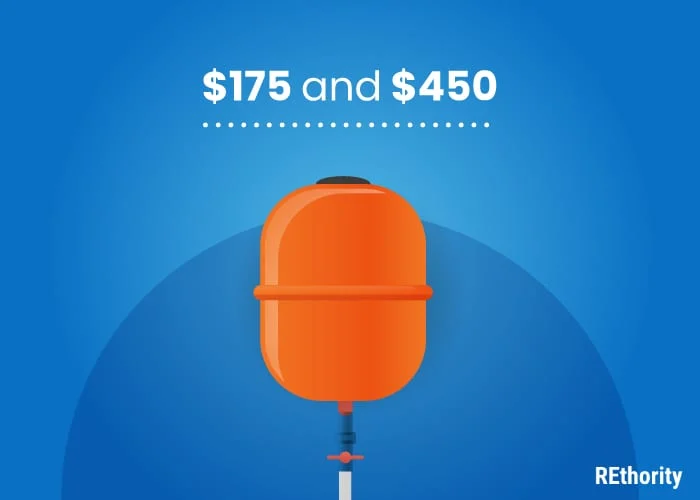
Now that you have an idea of whether or not you need a water heater expansion tank, the next step is determining the approximate cost. Water heater expansion tanks are not terribly expensive.
But high-end models can be a bit pricier. Expect to pay anywhere from $40 to $200, or about $120 on average, for a water heater expansion tank. The price varies based on the tank size.
On average, residential homes with 40- to 50-gallon water heaters use a 2-gallon water heater expansion tank. This is because 50 gallons of heated water will expand by about 2 gallons, making this tank the perfect size for most homes.
Hiring a plumber to install the tank will be a little more costly than installing it yourself, but it’s well worth leaving this job to a professional.
Expect to pay anywhere from $175 to $450 to have a professional water heater expansion tank installed. If you have a plumber install a water heater expansion tank while installing a water heater, you can save on some of the labor costs.
Installing a Water Heater Expansion Tank
Installing a water heater expansion tank is considered a moderately difficult DIY project. It involves several steps, a few tools and parts, and experience working with the plumbing in your home.
If you’re not experienced working with plumbing or have never done a project like this, we recommend calling a professional for installation.
It’s always helpful to understand the installation process so you’ll know what to expect. When a plumber installs a water heater expansion tank, they are taking the following steps:
- Splicing the cold water delivery pipe that leads to the water heater
- Installing a tee fitting above the water heater
- Installing the water heater expansion tank
Installation is not as simple as it sounds. Here’s how a plumber will install your water heater expansion tank.
 Close the Valves
Close the Valves
First, the water valves will be closed, and the hot and cold water pipes will be disconnected from the water heater. A dielectric union will be attached to the cold water entry port on the water heater.
The dielectric union’s bottom threads should be wrapped with pipe sealing tape and threaded onto the cold water entry port with channel lock pliers or a pipe wrench.
Wrap the Threads
Now, the top threads of the dielectric union will also be wrapped with pipe sealing tape. A female threaded copper adapter will be attached to the union’s top threads and secured again with channel lock pliers or a pipe wrench.
At this point, a tee fitting will be installed. First, a short piece of copper pipe will be attached to the female threaded copper adapter on the water heater.
Secure the Tee
The tee fitting will be secured to the copper pipe with sweat-soldering or push-fit connections. It should be installed about 12 inches above the water heater to ensure there is plenty of room for the expansion tank.
Another short piece of copper pipe (no longer than 6 inches) will be soldered or push-fitted onto the side outlet of the tee fitting that was just installed.
Attach the Expansion Tank
At the end of this pipe, another copper female threaded adapter will be installed. The water heater expansion tank can now be installed. Pipe sealing tape will be wrapped around the new expansion tank’s threaded fitting.
Then, it will be threaded by hand onto the female threaded adapter that was just installed. Finally, the top, open outlet on the tee fitting will be connected to the cold water supply pipe.
A plumber may use copper flex line or rigid pipes to do this. The hot water pipe will be reconnected to the water heater, the water valves will be opened, and the installation will be tested.
We partnered with Networx to help you find local plumbers in your area. Click to below to get a FREE quote.
Should a Pro Install Your Water Heater Expansion Tank?
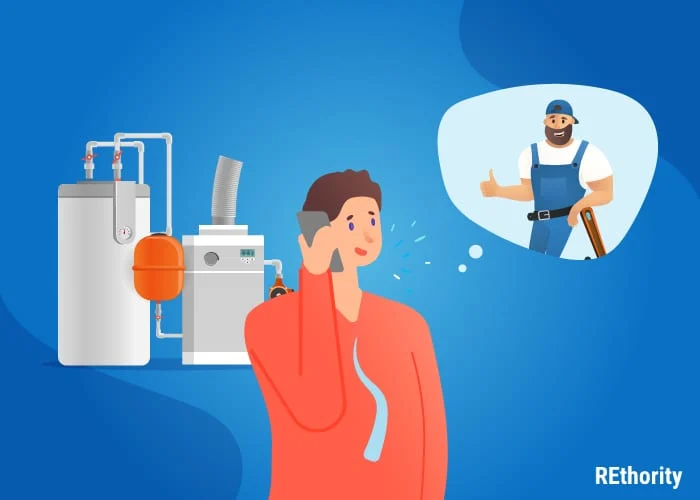
After reading through the installation steps for a water heater expansion tank, you can see why most homeowners decide to call a plumber for this job.
It is a relatively challenging project that involves many fittings, specialized tools and parts, and careful precision to avoid causing damage to the plumbing.
A mistake during installation could result in leaks, increased pressure in plumbing, stripped threads, overtightening, and more.
It’s better to call a professional for this project and avoid taking the risk of doing it yourself.
Final Thoughts
Water heater expansion tanks are an essential safeguard device for any home on a closed-loop water supply system.
They’re a good idea to install if you have a traditional tank-style water heater.
Maybe your city requires it, or you could just notice water dripping from your water heater’s relief valve.
In any case, expansion tanks are affordable devices that prevent expensive damage to your home’s plumbing fixtures and water heater.

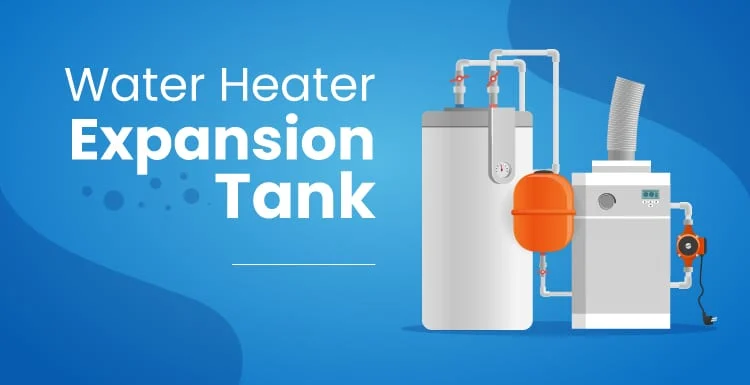

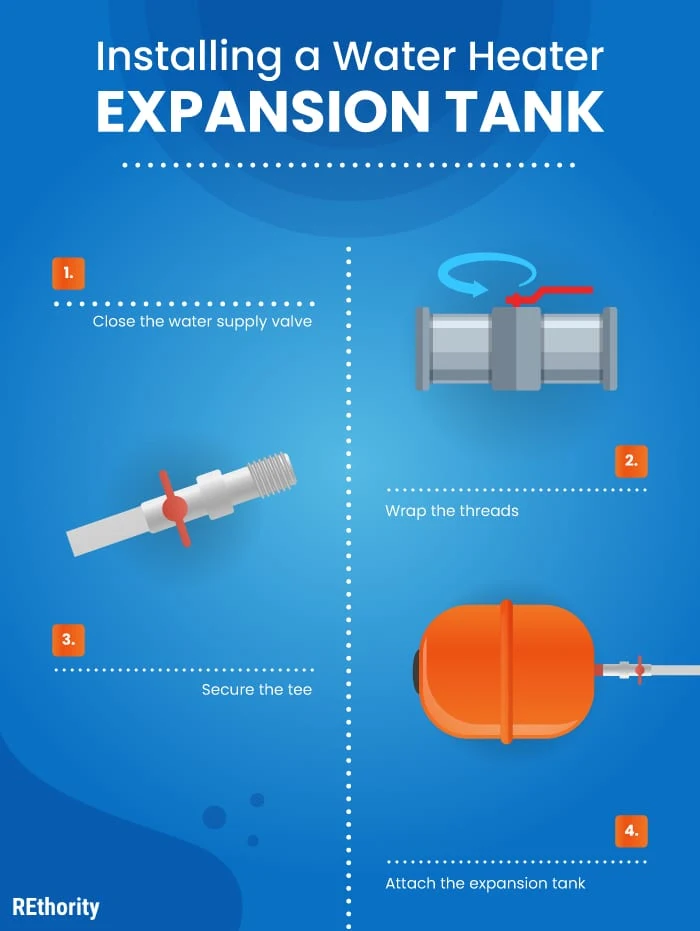 Close the Valves
Close the Valves